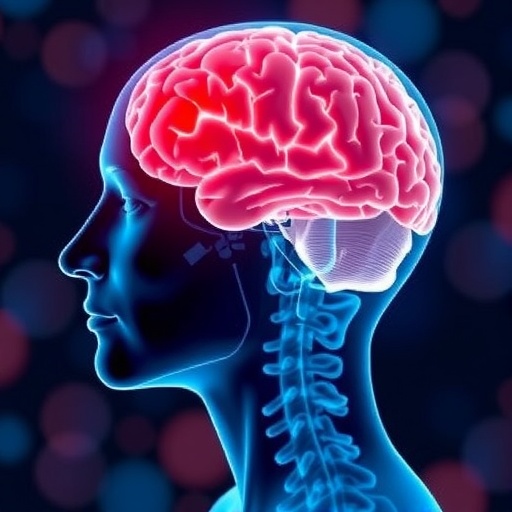In a groundbreaking advance that promises new hope for Parkinson’s disease patients grappling with progressive mobility loss, researchers from Germany have unveiled a novel approach exploiting the brain’s lesser-known neural circuits. The team, spanning Ruhr University Bochum and Philipps-Universität Marburg, has demonstrated that optogenetic stimulation of the inferior colliculus, a midbrain structure traditionally linked to auditory processing, can activate the mesencephalic locomotor region (MLR) and significantly improve ambulatory ability in experimental animal models. This pioneering study, published in Scientific Reports on April 12, 2025, not only deepens our understanding of the neurophysiological underpinnings of movement but also points toward innovative therapeutic strategies beyond the canonical basal ganglia circuits afflicted by Parkinson’s disease.
Parkinson’s disease, a neurodegenerative disorder, progressively impairs motor function, often culminating in the devastating inability to walk. While deep brain stimulation (DBS) of regions such as the subthalamic nucleus within the basal ganglia has become a mainstream intervention, its mechanisms remain partly enigmatic and its efficacy can diminish as the disease advances. Dr. Liana Melo-Thomas and her colleagues set out to interrogate an alternative neural substrate that could bypass the deteriorated basal ganglia circuitry and offer a new conduit for restoring locomotion. Their focus: the inferior colliculus, a midbrain hub more famously associated with auditory signal integration but intriguingly spared from Parkinsonian pathology.
Previous rodent studies conducted by Melo-Thomas’s group had hinted that stimulating the inferior colliculus might evoke motor improvements, likely by recruiting the MLR, a brainstem nucleus integral to the initiation and modulation of locomotion. This study extends that work by leveraging the precision of optogenetics—a cutting-edge technique wherein specific neurons are genetically modified to express light-sensitive proteins. By delivering targeted light pulses through implanted optical fibers, the team achieved millisecond-level control over neuronal activation or inhibition, eclipsing the spatial and temporal resolution limitations of conventional electrical stimulation.
Collaboration with Dr. Wolfgang Kruse at Ruhr University Bochum, whose team brings expertise in neurobiology and general zoology, proved crucial in refining these optogenetic methods. They employed genetically altered rats wherein inferior colliculus neurons produced channelrhodopsins, light-activated ion channels that enable excitation when illuminated. This approach ensured selective activation of discrete neuronal populations within the inferior colliculus, minimizing off-target effects and providing unambiguous insights into the functional connectivity with the MLR.
The temporal precision of these effects was particularly revealing. The average latency between inferior colliculus activation and consequent MLR neuronal response was measured at just 4.7 milliseconds, a timeframe consistent with monosynaptic connections. This rapid signaling underscores a direct, functional synaptic link facilitating the transmission of locomotor commands from the auditory-related midbrain structure to the locomotor center, thus unveiling an alternative pathway that could be harnessed therapeutically.
Behavioral assessments conducted on conscious rats corroborated the electrophysiological findings. Animals subjected to inferior colliculus stimulation exhibited marked reversal of haloperidol-induced catalepsy, a pharmacological model mimicking Parkinsonian akinesia. These improvements in motor function indicate that modulating this atypical neural circuit can overcome severe movement impairments, suggesting that the inferior colliculus-MLR axis holds untapped potential as a target for deep brain stimulation or neuromodulation therapies.
This research fundamentally challenges the traditional basal ganglia-centric view of Parkinson’s disease motor dysfunction. While DBS targeting basal ganglia nuclei remains invaluable, the non-degenerative nature of the inferior colliculus in this disease context and its newly discovered influence on locomotion position it as a compelling adjunct or alternative target. Expanding the therapeutic focus beyond the basal ganglia may also circumvent some limitations associated with current DBS techniques, including diminishing benefits over time and side effects arising from stimulation of broad brain regions.
Despite the promising findings, the authors acknowledge that translating optogenetic strategies from genetically engineered rodents to human patients involves significant hurdles. Nonetheless, the conceptual framework of selectively manipulating discrete neural pathways to restore function offers a tantalizing roadmap for future research and clinical innovation. In particular, elucidating the inhibitory components of the inferior colliculus-to-MLR circuitry and the molecular underpinnings governing this interaction could pave the way for pharmacological or gene therapy interventions that mimic optogenetic effects without the necessity for genetic modification or fiber optic implants.
Furthermore, this study exemplifies the power of interdisciplinary collaboration, combining neurobiology, engineering, and behavioral neuroscience to unravel the nuanced brain networks underlying motor control. The integration of optogenetically controlled stimulation with multifocal electrophysiological mapping enabled an unprecedented glimpse into functional circuit dynamics, setting a new standard for investigating brain stimulation mechanisms.
As the global burden of Parkinson’s disease continues to rise, innovations like these that venture beyond classical targets offer hope for patients facing debilitating immobility. The inferential leap from auditory processing to motor command control not only expands our neuroanatomical paradigms but also rekindles optimism that deep brain stimulation can evolve into ever more personalized, effective, and precise interventions. This foundational research lays critical groundwork for a future where mobility can be preserved or restored through finely tuned neuromodulation that leverages the brain’s own resilient circuitry.
In conclusion, the identification of the inferior colliculus as a modulatory node capable of engaging the mesencephalic locomotor region opens new vistas in Parkinson’s disease therapy development. The demonstrated ability to optogenetically reverse drug-induced catalepsy in rats validates the functional relevance of this pathway and encourages continued exploration of alternative neural routes to combat motor deficits. While clinical translation will require overcoming significant technical and biological challenges, this study marks a significant stride towards innovative treatments that could dramatically enhance the quality of life for Parkinson’s sufferers worldwide.
Subject of Research: Animals
Article Title: Optogenetic Stimulation of Inferior Colliculus Neurons Elicits Mesencephalic Locomotor Region Activity and Reverses Haloperidol-induced Catalepsy in Rats
News Publication Date: 12-Apr-2025
Web References: DOI:10.1038/s41598-025-96995-4
Keywords: Parkinson’s disease, deep brain stimulation, optogenetics, inferior colliculus, mesencephalic locomotor region, basal ganglia, neuronal circuits, locomotion, electrophysiology, neural modulation
Tags: alternative therapies for Parkinson’sauditory processing and motor controlbrain stimulation for mobilitydeep brain stimulation limitationsinferior colliculus and locomotionmesencephalic locomotor region activationneurodegenerative disease advancementsneurophysiology of movement disordersoptogenetic stimulation researchParkinson’s Disease treatment innovationsRuhr University Bochum researchtherapeutic strategies for motor function





